
















The Hyperinflation Meltdown
Copyright © October 7, 2010 by Robert Wayne Atkins, P.E.
All rights reserved and all rights protected under international copyright law.
Introduction
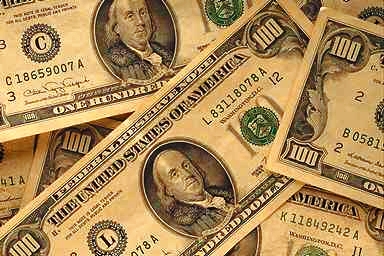 No one can predict the future. And that includes myself.
No one can predict the future. And that includes myself.
However, in my opinion, unless an unexpected miracle happens then there is a very good chance we will all experience one of the following two possible futures:
- A Bank Holiday Meltdown (One-Hour Meltdown): If our financial institutions suddenly and unexpectedly lose control of the economy, and an overwhelming number of people suddenly become aware of this fact, then a worldwide bank run will result. The banks will respond by shutting down and declaring a "temporary bank holiday" and they will place 100% of the blame on "public fear and panic." This would have catastrophic consequences worldwide. This possibility is discussed in detail in the following article: The One-Hour Meltdown - Part One.
- A Hyperinflation Meltdown: If our governments and our financial institutions continue to work together then they may be able to control the meltdown in such a way that they survive and only the citizens of their nations are destroyed. Of the two possible meltdowns, this is the one our governments and our financial institutions would prefer. Therefore, a hyperinflation meltdown needs to be examined in more detail.
Since hyperinflation involves money, let's begin by examining the concept of what "money" really is.
Money
 |
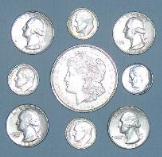 |
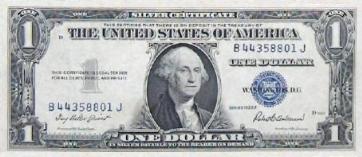 |
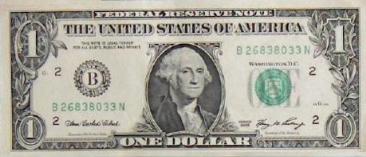 |
| Gold Nuggets | Old Silver Coins | Silver Certificate | Federal Reserve Note |
Since the beginning of recorded history money has gradually evolved in the following four major stages:
- Copper and silver and gold were refined into small pure pieces of metal of various sizes, shapes, and weights. These small pieces of metal could then be poured onto a scale and carefully weighed in order to pay for something of value. (Note: This system of money is still in existence today throughout most of the world. For example, you could take a silver or gold ring to a store that buys silver and gold and they would give you "money" in exchange for your silver or gold jewelry. You could then use that money to buy something you want.)
- Copper and silver and gold were minted into coins of specified weights by the ruling monarch or government. These coins were normally imprinted with the monarch's image, or the government's seal. These precious metal coins were then used to pay for things of value. (Note: In the United States of America Silver Dollars were minted until the year 1935 and they were used to pay for goods and services. Silver dimes and silver quarters were minted until 1964 and they were used to pay for goods and services. From 1986 until today one-ounce Silver Eagles have been minted but they have not been used to pay for goods and services.)
- Paper money was printed by the government and that paper money could be exchanged for the same exact amount of silver coins or gold coins by anyone at any time if a person preferred silver or gold instead of paper money. This was a "partial restraint" on the power of the government to print more money because its citizens could convert their paper money into silver and gold coins. However, if there were not enough silver and gold coins to satisfy the demand of its citizens, and its foreign creditors, then the government would collapse and the government leaders would usually pay for their mistakes with their lives. (Note: Until June 24, 1968 the United States of America would redeem its $1.00 bill, which was called a "silver certificate," for a $1.00 silver dollar coin. Until 1971 the United States of America would redeem its paper money from foreign creditors with gold priced at $35.00 per ounce.)
- Paper money was printed by the government and that paper money was not backed by anything except the faith of the people that it could be used to buy something of value, including silver or gold. However, the government itself was under no obligation to redeem its paper money for anything of value. Therefore, the conversion price of the government's paper money into silver and gold coins constantly changed based on how much money the government printed (inflation), and how much faith its citizens, and its foreign creditors, had in the conversion value of that paper money into items of true value. (Note: This is the situation that currently exists in the United States of America because the government's $1.00 bills are now called "federal reserve notes." If the United States' inflation rate is measured in the price of gold increasing from $35 in 1971 to approximately $1,300 in October of 2010, then the average rate of inflation per year for each of those 39 years would be approximately 9.7% per year, compounded yearly. What this means is that $35.00 in United States paper money in 1971 would be worth 94 cents of purchasing power in October of 2010 at a true inflation rate of 9.7% per year over a 39-year period. On the other hand, if you owned a one-ounce gold coin worth $35 in 1971 then it would be worth approximately $1,300 in October of 2010.)
Since the beginning of recorded history no nation that has evolved into Stage Four above has survived. In every case that nation eventually collapsed. At the current time the United States of America is in Stage Four. The U.S. government is bankrupt, the Federal Reserve is bankrupt, and almost every U.S. bank is in serious financial trouble.
Nobody knows how much longer the financial system in the United States of America will continue to hold together. It could collapse overnight (see the one-hour meltdown article), or our leaders may be able to manage the collapse in such a way that only the citizens of the United States are destroyed and the government and the banking system survive. This is the option that will be discussed in more detail below.
Note: Digital money (debit cards and credit cards) is now widely used instead of paper money or bank checks. Digital money doesn't require the minting of coins or the printing of paper money. It can be created electronically by anyone who has the authority to create money (government and banking executives) and by ordinary citizens when they use credit cards. It is also now much easier to steal in astronomical quantities by anyone who has the knowledge of how the digtital money system works.
The Hyperinflation Meltdown
Consider the following scenario:
- The price of gasoline, diesel fuel, and food all begin to noticeable increase on a weekly basis. For example, in the United States the price of gasoline could increase by approximately $0.10 or $0.15 per gallon each week for several weeks. Then the price of gasoline could begin to increase by approximately $0.20 or $0.30 per gallon per week. After just three or four months the price of fuel could easily be higher than $7.00 per gallon. And the price of food could have doubled or tripled during this same time period. However, official government inflation statistics may only mention a 5% of 6% increase in prices because these official statistics will also include things like the price of a new car, or television, or refrigerator, and the price of these items may not have changed. The reason these prices will not have increased will be due to the fact that almost nobody is buying these things because they have no money left over after they have purchased food and gasoline at hyperinflation prices.
- The government issues a freeze on all prices and all wages and all welfare benefits in response to the situation. This means there will be no increase in a person's wage or salary or social security check because it is now frozen. The problem just got worse because people couldn't afford gasoline and food before and now their wages have been frozen. The price freeze also means that food and gasoline will be rationed and each person will only be allowed to buy a very, very small amount of food and gasoline each week. And the total quantity of food and gasoline will also be severely limited. Each geographical area will only receive a very limited amount of food and gasoline each week and the only people who will get any of that food or gasoline before it is all gone will be those people who will wait in line for hours, or days. For example, a delivery of gasoline may arrive at a gas station, and then in a matter of just a few hours that station may sell all of its gas to those people who have been waiting in line for three days. After that gas is all gone, even if a person is eligible to buy a gallon of gas according to his or her ration card, that person will not be able to buy any gas because there will be no more gasoline available. In addition, any gas or food ration that is not claimed during a one-week period will automatically expire. (Note: During this period there will be a few special individuals in each geographical area who support the government and who are responsible for executing its plans. These special individuals will be able to buy their food and gasoline at a "special location" each week where they will not have to wait in line and where they will be guaranteed a surplus quantity of food and gasoline that will be more than what the rest of us common citizens receive.)
- The government expresses its deepest sympathy about the current situation and they promise that things will improve soon. Just be patient.
The government will not have to worry about its citizens at this point because mobility will have been severely limited (no gasoline) and people will be starving to death.
When this happens each person will need to make a very simple choice:
- Stand in line for many, many hours to get a little food (this is already the current situation in many nations around the world), or
- Travel to some remote location and stand in front of some government building and protest in person while slowly dying of starvation.
But how will a person be able to travel to that remote government building on two gallons of gasoline?
And even if they could get there, how are they going to get back home if they have no gasoline? And how long can they stand there without any food?
In this situation does occur then there will be two groups of people as follows:
- A person who still has a job and who is desperate to keep that job so his or her family can continue to survive, even if that survival is at a much lower level than they were accustomed to.
- A person who does not have a job and who cannot afford to buy gasoline (therefore their mobility is severely limited), and who cannot afford to buy food (therefore no human energy to be able to go out and complain, or to cause problems).
If the above happens then the United States of America would become effectively grid-locked. Without affordable food and fuel, people can scream, and cry, and complain but they will quickly realize that their voices are being tactfully ignored by their government leaders. And there will be nothing these people will be able to do about their situation because they will have a limited amount of fuel and a limited amount of food and they will all be very slowly starving to death.
And local violence will not accomplish anything or change anything. Any geographical area that decides to burn down its grocery stores, gasoline stations, or government buildings will be declared to be "unsafe" and the government will stop all future deliveries of food and fuel to that area. Therefore, after the majority of the people in the United States watch television and they see what actually happens to an area that "revolts" then they will immediately realize that local violence will accomplish nothing except to bring about the death of that area more quickly. At this point the citizens of the United States will become the property of the government and there will be nothing the people can do about it.
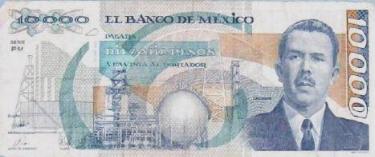
If the above happens in almost every major nation on the face of the earth at approximately the same time, then the stage will be set for a "one-world government" and there will be absolutely nothing the people of the world will be able do to do to stop it.
Living conditions worldwide will be leveled. Almost everyone will be in serious financial trouble, and almost everyone will be slowly starving to death. This situation already exists in many nations around the world. And soon this may also become the "status quo" in the more prosperous nations, such as the United States of America. No one will need to watch television to see the thin shriveled bodies of little children who have starved to death. All they will need to do is to look out their windows into the streets in front of their homes to see the dead bodies of several little children.
There is No National or Global Solution
The government and the banking system of the United States of America no longer have any options for correcting the situation for three reasons:
- The financial system is now global and there are too many independent nations that have vested interests in the outcome of any decisions that are proposed. Therefore, it will not be possible to reach any type of solution that would satisfy all the major players.
- The government system is too complex and it is impossible to get the different departments and branches of the government to work together in an efficient manner. The reason is because efficiency would mean the elimination of some departments and branches and this would be totally unacceptable to those departments and branches that need to be eliminated. In business this is referred to as "downsizing" but this strategy will not work at the government level.
- The social welfare system cannot be financed for free. It only works if there are enough individual workers who are employed in some meaningful way, and those workers generate a surplus, and the government confiscates that surplus. The government then keeps most of that surplus for itself and gives a small portion of it to the non-workers on welfare. At the current time the scales have tipped too far in the wrong direction and there are no longer enough workers to support the government and the non-workers. Therefore, the non-workers will get less and less until they eventually starve to death, or they decide to become productive workers doing something of true value in the society in which they live. But many of these non-workers will not be able to find work because of their advanced age, or extremely poor health, or some other legitimate reason. Therefore to keep the welfare recipients under control, the benefits of the non-workers will be systematically reduced through planned hyperinflation. These welfare recipients will then slowly starve to death, or die of health problems directly related to malnutrition, and when that happens they will cease to be a problem for the government.
A One-World Government
If the above events do occur, then the stage will be set for the creation of a one-world government.
If this happens during your lifetime, then please do not put much confidence in the ability of the new one-world government to solve the problems of the world.
At the current time there are:
- Nations that passionately hate everyone in another nation and they will not rest as long as one person remains alive in that other nation.
- Religious groups that passionately hate everyone in another religious group and they will not be happy until that other religious group is completely destroyed from the face of the earth.
- People of one race who passionately hate people of another race and they want that other race wiped off the face of the earth.
- People who believe that society owes them something and that they should receive everything they want for free and if they don't get what they want then they will kill and steal until they do get everything they believe they deserve.
The above problems have been around for thousands of years and there is no way a one-world government is going to resolve these problems. The only thing a one-world government will accomplish is to add itself to the list of the above things that people passionately hate. Therefore a one-world government has no chance of being successful in the long-term. (Note: The one exception will be the government established by Jesus Christ when He returns and rules for 1,000 years.)
Conclusion
Today each family still has a choice.
- Food: Each family could invest in some long-term storage foods right now while the price of food is still reasonable.
- Fuel: Investing in fuel would probably not be advisable, except in very small quantities, such as five or ten gallons of gasoline that is stored in five-gallon fuel cans with a fuel stabilizer added. If living conditions during the breakdown become really bad then this would give a family the option to travel to another area, such as the home of a close relative who lived on a farm.
- Fuel Efficiency: Vehicles that average 28 miles per gallon (MPG) or higher would be very practical during a hyperinflation event. Vehicles that average 19 or fewer MPG will probably not be driven very much during a hyperinflation event. Therefore, each family should seriously evaluate the fuel efficiency of any vehicles they own before a hyperinflation event occurs. (Note: Although most motorcycles have a higher MPG than most vehicles, a motorcycle will only carry one or two people, plus a very, very limited amount of supplies. Therefore, when you consider the total amount of fuel required to move a small family and a week's worth of groceries between locations, a vehicle is always more fuel efficient than a motorcycle. Motorcycles are also unacceptable during bad weather, such as thunderstorms, and during the cold weather months. Therefore I strongly recommend a high fuel efficiency automobile or truck instead of a motorcycle.)
Footnote: Bank Holiday, or Hyperinflation, or Both?
It doesn't matter whether the meltdown is the result of hyperinflation or a bank holiday because the end result will be the same.
- If there is a bank holiday then while the banks are closed nobody will be able to get any of their money. While the banks are closed the government will devalue its currency and the price of everything will increase the moment the devaluation is announced. A short time later the banks will reopen but with restrictions on the amount of money everyone can withdraw per week. Prices will then continue to rapidly increase and a person's life savings will continue to be worth less and less each week in terms of real purchasing power.
- If there is hyperinflation then the price of necessary items, such as food, fuel, medicine, and electricity, will begin to rapidly increase on a weekly basis. People will become extremely upset as they watch the purchasing power of their life savings rapidly decline in value. In an effort to avoid a complete loss of their life savings, people will begin withdrawing their money from the banks and they will buy anything they can, such as a house or a piece of land or a one-year supply of food. The response of the public to this planned period of hyperinflation will result in a bank run and the banks will declare a "temporary bank holiday." While the banks are closed prices will hyperinflate at a much faster pace than before. When the banks do eventually reopen each person will discover that his or her life savings is now only worth a small fraction of its original purchasing power.
The end result of both of the above scenarios is the same. The governments and the banks will survive and the common people will be destroyed. For example, a person who has worked hard all his or her life and who has $1,000,000 saved will still have $1,000,000 but that money will only buy the equivalent of what $1,000 would buy a year ago. The governments and the banks can politely label this anything they wish but the people who are the victims of this theft will know exactly what happened to them.
Respectfully,
Grandpappy.
Grandpappy's e-mail address is: RobertWayneAtkins@hotmail.com




































 No one can predict the future. And that includes myself.
No one can predict the future. And that includes myself.





